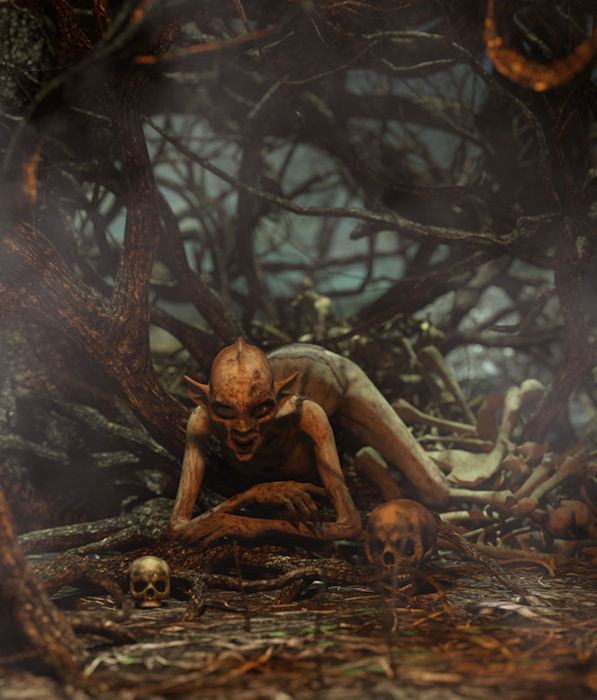Empusa – Shape-Shifting Evil Female Demon In Greek Myth And Folklore
A. Sutherland - AncientPages.com - The empusa initially appears in the mythology of classical Greece as a frightening female monster. She is a demonic vampire without a shape of its own, but with the ability to appear in many different animal guises and as a beautiful, tempting young woman.
Credit: Adobe Stock - Joeprachatree
Modern-day Greek folklore still speaks of the empusa, who enters the body of its human prey (particularly children) to consume the flesh and blood of its victim. She loves to eat young and beautiful bodies and drink their blood because it’s strong and pure.
Empusa represents the Grecian form of a vampire. In the Greek myth, this female demon is usually described as having one prosthetic leg made of brass and the other leg of a donkey; from the waist up, Empusa is a human-like creature with hideous blemishes and scars on her skin.
She was said to have been the daughter of the goddess of witchcraft, the night, moon, ghosts, and necromancy, Hekate, and was sent by her to torment people, especially travelers.
This evil creature seeks its prey, and as the shape-shifter changes its apparition into an animal or a beautiful woman. She drinks her victims’ blood and consumes their flesh (like a vampire or succubus). The monster thrives in waters and on land, so it usually dwells along the coast.
An ancient story about a 25-year-old man of Lycia, Menippus, who is intelligent, handsome, and exceptionally well-built as an athlete, relates an encounter with this evil creature. One day, as Menippus walks along the road, he is met by an apparition. Empusa appears in the guise of a Phoenician woman, and Menippus lives under her spell. He falls in love with her and plans to marry her, unaware of what she is.
Apollonius is somewhat skeptical of her; he attends the wedding and is introduced to her by Menippus of Corinth, his former student. This wealthy woman is the mistress of all the servants. Hearing this, Apollonius tells Menippus that his wonderful bride is nothing but a vampire who – like others in her race - loves to devour flesh and blood of its victims.
Apollonius of Tyana made the young woman confess her true identity, thereby rescuing Menippus from a terrible fate on his wedding night.
Menippus’ bride is offended and orders Apollonius to leave, but his words have already broken her spell, and all the gold, silver, and servants vanished.
Pretending to weep, this demonic creature begs Apollonius not to force her to confess what she is, but he does. Finally, she admits she usually chooses her offers among young and beautiful people to dine on them, and Menippus is one of them.
Belief in this evil monster persists into modern times. Present-day shepherds blame her for accidents that happen to their animals, claiming that she suddenly appears, hurts them, and disappears again. Later tales describe a whole race of these monsters - the Empusae - living on the North African coast in Libya.
The ’Empusa’ is the early Greek term for the later Latin term ‘lamia.’ Over the ages, the descriptions of this female demon changed considerably and were often confused with Lamia
Ancient people believed that the only defense against these monsters was abusing them verbally or shouting insults. As a result, they screamed and fled their way.
Except for the Greek account of Empusa, the same awful creature is known in other ancient cultures of the Mediterranean region.
Written by – A. Sutherland AncientPages.com Staff Writer
Copyright © AncientPages.com All rights reserved. This material may not be published, broadcast, rewritten or redistributed in whole or part without the express written permission of AncientPages.com
Expand for referencesReferences:
Grant M, Hazel J. Who's Who in Classical Mythology
March J. R. Dictionary of Classical Mythology
More From Ancient Pages
-
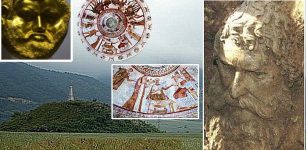 Remarkable Thracian Tomb In Huge Mound Necropolis Of Kazanlak, Bulgaria
Featured Stories | May 13, 2024
Remarkable Thracian Tomb In Huge Mound Necropolis Of Kazanlak, Bulgaria
Featured Stories | May 13, 2024 -
 Rare Well-Preserved Viking Artifacts Lost On Mountain Pass – Revealed By Retreating Glaciers
Archaeology | Apr 16, 2020
Rare Well-Preserved Viking Artifacts Lost On Mountain Pass – Revealed By Retreating Glaciers
Archaeology | Apr 16, 2020 -
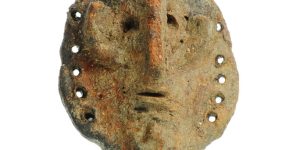 Unique Ancient Figurine Puzzles Scientists – Was She An Unknown Pre-Historic Water Goddess?
Archaeology | Jul 21, 2022
Unique Ancient Figurine Puzzles Scientists – Was She An Unknown Pre-Historic Water Goddess?
Archaeology | Jul 21, 2022 -
 Submerged Roman Villa Discovered On The Coast Of Cerveteri, Italy
Archaeology | Jun 6, 2024
Submerged Roman Villa Discovered On The Coast Of Cerveteri, Italy
Archaeology | Jun 6, 2024 -
 Aurelian Walls Built By Emperor Aurelian Who Tried To Lead Roman Empire Out Of The Crisis
Featured Stories | Apr 16, 2018
Aurelian Walls Built By Emperor Aurelian Who Tried To Lead Roman Empire Out Of The Crisis
Featured Stories | Apr 16, 2018 -
 Can Aikman Mounds In Arkansas Explain The Hopewell Culture’s Mysterious Disappearance?
Featured Stories | Apr 30, 2019
Can Aikman Mounds In Arkansas Explain The Hopewell Culture’s Mysterious Disappearance?
Featured Stories | Apr 30, 2019 -
 Ancient Mysteries In The Amazon Jungle – Strange White Men With Glowing Eyes – Part 1
Ancient Mysteries | May 28, 2018
Ancient Mysteries In The Amazon Jungle – Strange White Men With Glowing Eyes – Part 1
Ancient Mysteries | May 28, 2018 -
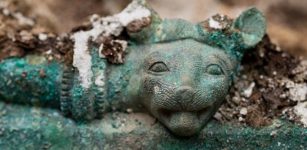 Tomb Of Celtic Prince Has Been Unearthed In France
Archaeology | Mar 5, 2015
Tomb Of Celtic Prince Has Been Unearthed In France
Archaeology | Mar 5, 2015 -
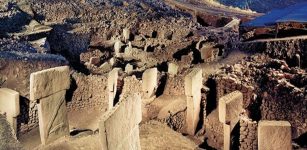 Ancient Astronomical Symbols At Göbekli Tepe Confirm A Comet Swarm Struck The Earth 11,000 B.C.
Archaeology | Apr 23, 2017
Ancient Astronomical Symbols At Göbekli Tepe Confirm A Comet Swarm Struck The Earth 11,000 B.C.
Archaeology | Apr 23, 2017 -
 On This Day In History: Riot Over Wine In Oxford – On Feb 10, 1355
News | Feb 10, 2017
On This Day In History: Riot Over Wine In Oxford – On Feb 10, 1355
News | Feb 10, 2017 -
 Deadly Catastrophe In Pompeii And An Overlooked Piece Of The Well-Researched Disaster
Archaeology | Jul 18, 2024
Deadly Catastrophe In Pompeii And An Overlooked Piece Of The Well-Researched Disaster
Archaeology | Jul 18, 2024 -
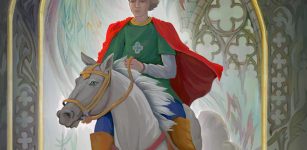 King Lud – Mysterious Founder Of London And His Connection To The Tuatha De Danann
Featured Stories | Oct 21, 2021
King Lud – Mysterious Founder Of London And His Connection To The Tuatha De Danann
Featured Stories | Oct 21, 2021 -
 DNA Reveals Neanderthals’ Own Blood May Have Led to Their Demise, Scientists Say
Evolution | Jan 27, 2025
DNA Reveals Neanderthals’ Own Blood May Have Led to Their Demise, Scientists Say
Evolution | Jan 27, 2025 -
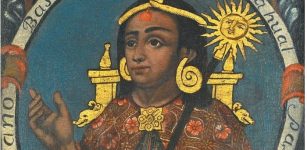 On This Day In History: Last Inca Emperor Atahualpa Captured By Francisco Pizarro – On Nov 16, 1532
News | Nov 16, 2016
On This Day In History: Last Inca Emperor Atahualpa Captured By Francisco Pizarro – On Nov 16, 1532
News | Nov 16, 2016 -
 Two-Story Houses With Balconies Unearthed In Ancient City Of Pompeii, Italy
Archaeology | May 18, 2018
Two-Story Houses With Balconies Unearthed In Ancient City Of Pompeii, Italy
Archaeology | May 18, 2018 -
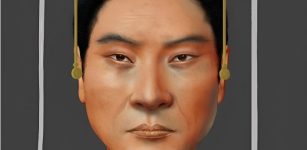 Facial Reconstruction Of Chinese Emperor Wu Who Lived 1,500 Years Ago
DNA | Mar 29, 2024
Facial Reconstruction Of Chinese Emperor Wu Who Lived 1,500 Years Ago
DNA | Mar 29, 2024 -
 Paititi: Legendary Lost Inca City Of Gold Built By The Inca Hero Inkarri
Featured Stories | Mar 16, 2016
Paititi: Legendary Lost Inca City Of Gold Built By The Inca Hero Inkarri
Featured Stories | Mar 16, 2016 -
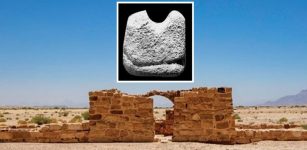 World’s Oldest Chess Piece Discovered At Humayma In Jordan?
Archaeology | Nov 26, 2019
World’s Oldest Chess Piece Discovered At Humayma In Jordan?
Archaeology | Nov 26, 2019 -
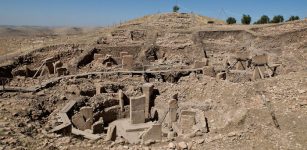 This Is The Mysterious Hilltop Where Civilization Began Scientists Say
Archaeology | Jun 24, 2022
This Is The Mysterious Hilltop Where Civilization Began Scientists Say
Archaeology | Jun 24, 2022 -
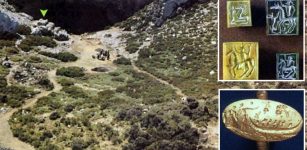 Sophisticated Lenses Of Minoans Discovered In The Sacred Idaion (Ideon) Cave
Civilizations | May 31, 2017
Sophisticated Lenses Of Minoans Discovered In The Sacred Idaion (Ideon) Cave
Civilizations | May 31, 2017

